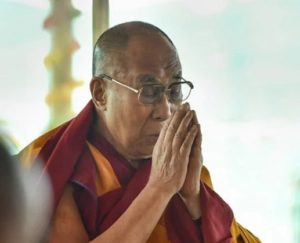 China’s Document No 5 from 2007, which states that the process for the recognition and enthronement of Tibetan Buddhist reincarnates must be supervised and approved by the Chinese government, has recently come in for intense criticism from various organisations across the world.
China’s Document No 5 from 2007, which states that the process for the recognition and enthronement of Tibetan Buddhist reincarnates must be supervised and approved by the Chinese government, has recently come in for intense criticism from various organisations across the world.
Tibetan Buddhist leaders in Europe rejected China’s stance at a conference in Belgium at the beginning of December. In Toronto, Canada, various Chinese organisations; including the China Democratic Party of Canada; Federation for a Democratic China and the New Hong Kong Cultural Club, released a joint communiqué stating, “The reincarnation of the Dalai Lama is purely a religious right of Tibetans and decision rights of His Holiness himself. The Chinese authorities have no right to interfere.”
On December 21, a group of prominent overseas Chinese intellectuals and democracy activists issued a joint declaration at a meeting in the United States. Read out by Mr Hu Ping, former editor of Beijing Spring, a Chinese-language New York-based magazine which promotes human rights, social justice and democracy in China, the statement referred to Chinese government interference in the selection of reincarnated Lama’s as “illegal and invalid” and “ridiculously illogical”.
These statements all came in the aftermath of the 14th Tibetan Religious Conference, held in Dharamshala from November 27 – 29 and attended by more than 150 Tibetan religious leaders, mainly from India, Nepal and the United States.
The conference was held at the headquarters of the Central Tibetan Administration (CTA), and it focused on the issue of reincarnation and adopted a resolution that the Dalai Lama should have sole authority to recognise his successor. In response, Chinese Foreign Ministry spokesperson Geng Shuang echoed Document No 5, saying, “The reincarnation of living Buddhas including the Dalai Lama must comply with Chinese laws and regulations.”
Shuang cites several hundred years of tradition relating to the selection of reincarnated Lamas using a golden urn. However, this process was only initiated and employed between 1791 and 1793, when Chinese military generals sent to Tibet to help the Tibetan army fight against Gurkha forces suggested it. Prior to that there had been 600 years of reincarnation tradition in Tibet, and once these generals departed, the golden urn was only infrequently used to humour Manchu expectations. The Dalai Lama has himself said that the golden urn “lacked any spiritual quality”.
Observers have commented on the irony of an atheist political party, which explicitly rejects the idea of past and future lives, demanding the right to choose the reincarnation of living Buddhas. Sikyong Lobsang Sangay, President of the CTA, responded to Mr Shuang, saying that the Communist Party of China selecting Tibetan Buddhist reincarnations was akin to Fidel Castro saying, “I will select the next Pope, and all the Catholics should follow.”
On the final day of the conference, His Holiness the Dalai Lama addressed the attendees and sought to defuse ongoing discussions about his reincarnation. “All of you discussed a lot about my reincarnation,” His Holiness was quoted as saying, “I am 84 or 85 years old and I am quite well. So why are you in a hurry about my reincarnation?”




 Print
Print Email
Email